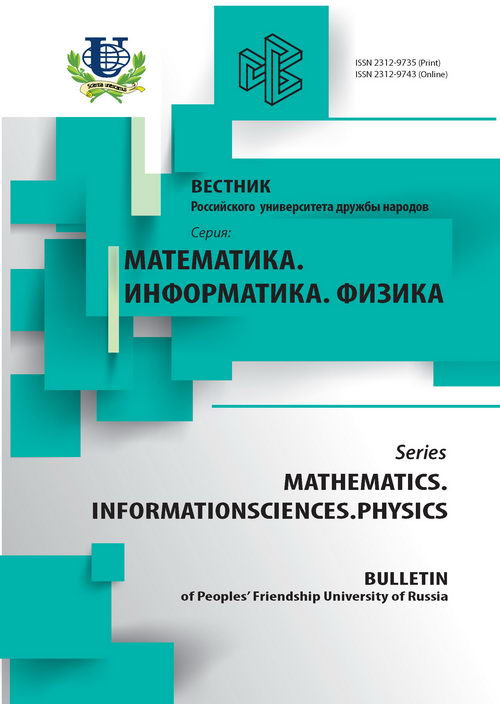Looking for Families of Periodic Solutions of Ordinary Differential Equations Systems by Normal Form Method. Part I
- Authors: Edneral VF1, Timofeevskaya OD2
-
Affiliations:
- Skobeltsyn Institute of Nuclear Physics Lomonosov Moscow State University (SINP MSU)
- Lomonosov Moscow State University
- Issue: No 3 (2014)
- Pages: 28-45
- Section: Articles
- URL: https://journals.rudn.ru/miph/article/view/8229
- ID: 8229
Cite item
Full Text
Abstract
In this paper, we discuss the application of resonant normal form method to the search of periodic solutions families of autonomous systems of explicit ordinary differential equations with polynomial nonlinearities in the right parts. Further, using formulated by Prof. A. D. Bruno sufficient convergence condition for the normalizing transformation, we find local families of periodic solutions of systems of such ODE in the vicinity of stationary points. In this unified approach both Hamiltonian and not Hamiltonian systems are investigated. For reasons of volume the article is divided into two parts. In the first part we describe an algorithm of implementing the method of normal forms. Software packages created by the authors are briefly described separately. We have developed a RLISP language package for working in REDUCE system, and for MATHEMATICA system a package on the external language of this system. This packages allow us, in particular, to obtain formulas describing local (containing a fixed point) families of periodic solutions. The results of calculations are presented in the form of Fourier series segments of a given length with frequency and coefficients themselves calculated as parameter series segments. This representation corresponds to the special case of segments of Poisson series. It is important that using a single algorithm, one can study both two-dimensional and higher-order systems. The second part is devoted to fourth-order systems. The comparison of tabulation of formulas obtained with numerical solutions of the corresponding equations shows good quantitative agreement. The approach described can be used for modeling of physical and biological systems.
About the authors
V F Edneral
Skobeltsyn Institute of Nuclear Physics Lomonosov Moscow State University (SINP MSU)
Email: victor.edneral@yandex.ru
Department of Applied Informatics and Probability Theory Peoples’ Friendship University of Russia 6, Miklukho-Maklaya str., Moscow, Russian Federation, 117198
O D Timofeevskaya
Lomonosov Moscow State University
Email: olgamsu1@yandex.ru
Physical Department
References
Supplementary files















